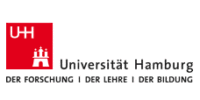Citizen science (CS) is broadly defined as ‘a way to actively involve citizens in a scientific endeavour that generates new knowledge or understanding across various professions’ (Vegt et al., 2023). This is a crucial toolbox for climate adaptation and mitigation strategy where scientists engage with local communities while locals interacts with their on-ground knowledge. Hence, I will investigate the role of scientists and citizens using the role theory across four citizen science project types by identifying the communication and interaction processes in knowledge production (Hecker & Taddicken, 2022). Concurrently, trust on scientific credibility and the level of public participation will be mentioned to demonstrate the mutual understanding and knowledge production can be sustainable for the prosperity.
In the poster, the central idea is to demonstrate the assimilation of the roles of citizens and scientists in action-based research projects in which climate actions can be effectively mobilised through localised plans. Among four different types of CS projects, contributory, collaborative, co-created, community-led CS projects will be established to allocate the involvement, tasks and interactions between scientists and citizens. Ideally, urban heat crowd sensing and flood early warning system which are the potential climate mitigation and adaptation strategies, will be included in the poster as case studies.
Reference
- Hecker, S., & Taddicken, M. (2022). Deconstructing citizen science: a framework on communication and interaction using the concept of roles. Journal of Science Communication, 21(01), A07. https://doi.org/10.22323/2.21010207
- Vegt, K. R., Elberse, J. E., Rutjens, B. T., Voogt, M. H., & Baâdoudi, F. (2023). Impacts of citizen science on trust between stakeholders and trust in science in a polarized context. Journal of Environmental Policy & Planning, 25(6), 723–736. https://doi.org/10.1080/1523908x.2023.2253164

Indeed a relevant topic, with literature provided. While I understand what is written, I have a difficult time to imagine the poster — you will (a) outline the roles of citizens and scientists, (b) describe four different types of CS projects and (c) illustrate things with case studies — plus, you will (d) cover the dimensions mitigation and adaptation? These dimensions (a) – (d) will have to be conceptually introduced with fitting terminology each, then related to each other, a storyline built and a conclusion built up… In short, I think this is way too much for one poster. I strongly suggest to focus on 3 of the 4 dimensions and fully explore one of them,
A great topic, and I look forward to seeing this spelled out in a poster. The literature is fine, but some of your sentences do not quite make sense yet, e.g. “This is a crucial toolbox for climate adaptation and mitigation strategy where scientists engage with local communities while locals interacts with their on-ground knowledge.” – locals interact with their knowledge (rather than with scientists), a toolbox for a strategy? The abstract also introduces too many terms, e.g. prosperity, without defining them. Please use as few and well defined terms as possible. It is also not clear to me yet, how the specific projects will be selected – based on the literature, or else?